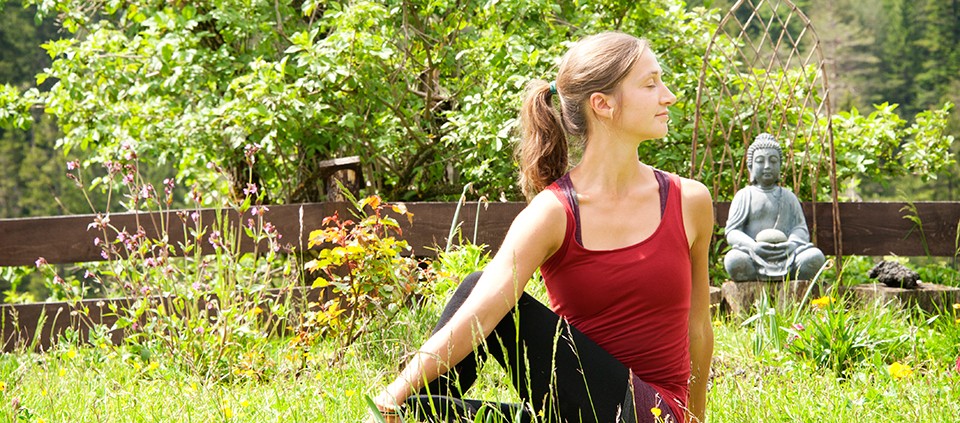Yoga for Healthy Knees

Do your knees hurt when practicing Virasana (Hero's pose)? Is Easy pose (Sukhasana) not so easy? Can yoga help with knee pain, or will it make it worse? Good questions!
Knee pain is a widespread problem. Twelve million Americans complain to their doctors about their knee pain. More than 20 million people have arthritic knees. There are some 600,000 knee replacements done every year, and that number is on the rise. Research shows that the root cause of many neuromuscular pain patterns is due to biomechanical misalignments caused by muscle imbalances. Therapists often refer this as the muscles being “locked long” or “locked short.”
There is no better place to get a sense of the condition of your knees than in yoga class. Many of my students tell me that their knees feel uncomfortable or even painful in certain poses. The solution lies in knowing how to keep the muscles, bones, tendons, and ligaments of the knee in balance.
The Pelvis-Knee Connection
In the final analysis, most pain is foundational, resulting from imbalances in the musculoskeletal system. We are in pain because we are misaligned, or “crooked.” Many of these imbalances originate in the pelvic region. When the pelvis is misaligned, the knees are not bearing weight optimally. The result is that the structure of the knees starts to wear out prematurely—just as, if the front end of your car is out of alignment, the tires will wear out quickly due to abnormal strain.
Most people that I work with in my practice as a neuromuscular therapist and yoga teacher have very similar imbalances that affect the knee. Typically, either the knee extensors are too short and strong in relation to the knee flexors, which are too long and weak; or the hip abductors are too short and strong in relation to the hip adductors, which are too long and weak. These imbalances are the root cause of many painful knee conditions, including meniscus tears, Baker’s cysts, and osteoarthritis.
To save your knees, keep the pelvis balanced. A straight pelvis will allow your knees to bear strain properly and last a long time. Bringing the pelvis and the knees into alignment involves balancing the muscles that support the knee and pelvis. There are four groups of muscles to consider when working with knee pain. These are the knee extensors (quadriceps), knee flexors (hamstrings), hip adductors (inner thighs), and hip abductors (outer thighs). These muscles all have some attachment points located on or near the pelvis and knee.
Selecting yoga poses that stretch the knee extensors and hip abductors, and strengthen the knee flexors and hip adductors, will bring those muscles and the knees and pelvis back into balance.
Three Yoga Postures to Relieve Knee Pain
Practice three to five times a day for three to five months.
Seated Spinal Twist (Ardha Matsyendrasana) stretches the hip abductors, gently bringing them back into balance.
Dancer’s pose (Natarajasana) stretches and gently opens the knee extensor muscles.
Bridge pose (Setu Bandhasana) strengthens the knee flexor muscles. Practicing with a block between the knees will help strengthen the hip adductors.
A word of caution: While these poses have helped many people to reduce or eliminate their knee pain, stretching too deeply (especially the knee extensors, or quads), can make the pain worse. Stretching should not cause pain, and poses that cause knee pain should be avoided. Help your students or clients modify the postures so that they are comfortable to practice, and assist them in working slowly toward the full expression of the pose.
Find out about upcoming programs with Lee Albert at Kripalu.
© Kripalu Center for Yoga & Health. All rights reserved. To request permission to reprint, please e-mail editor@kripalu.org.
Lee Albert, NMT, creator of Integrated Positional Therapy, is an author and a neuromuscular therapist and yoga instructor trained in orthopedic massage, positional therapy, and yoga therapy.
Full Bio and Programs